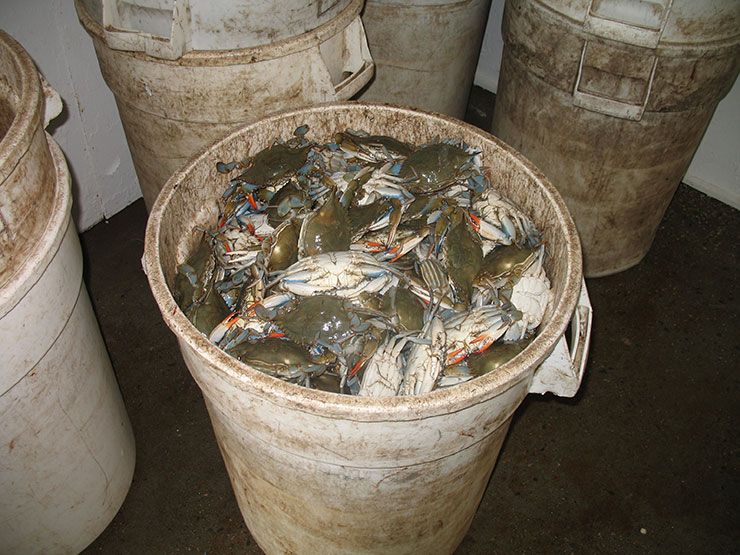In 1987, North Carolina Sea Grant colleagues tossed around the idea for a litter cleanup along the state’s entire coastline, joining a new national effort organized by the ocean conservancy.
Initial North Carolina partners included staff from state agencies, who anticipated an enthusiastic response from environmental educators and coastal youth groups. But overall interest and a spectrum of partners grew quickly from that first effort — and so did funding needs.

“We made the decision that we wanted to work with groups whose products had been targeted as the ‘problem,’ ” recalls Lundie Spence, then Sea Grant’s marine educator and who now heads the Centers for Ocean Sciences Education Excellence SouthEast, based in Charleston, S.C.
That decision meant inviting fast-food companies, beer and wine wholesalers, and the tobacco industry to join the fight against litter along beaches and waterways. It also meant writing grant proposals to cover basic costs.
“It was remarkable the amount of support that we got from those groups,” Spence notes, readily citing past slogans, such as: Don’t Leave Your Butts on the Beach.
Broad-based backing continues. This autumn marks the 25th year that volunteers will venture out — on foot or by canoe, with gloves and trash bags — in a coordinated cleanup effort. Reynolds American is a lead sponsor, along with Duke Power, First Citizens Bank and 60 others.
Operating statewide as the nonprofit North Carolina Big Sweep since 1989, the effort has tallied more than 300,000 volunteers and collected over 10.3 million pounds of trash.
“I would really like to have 25,000 volunteers this year. Think of all the litter we could pickup,” says Judy Bolin, the group’s president since 1995.
Recent years have seen about 18,000 volunteers. Bolin calculates their hours were worth nearly $1.1 million in 2010 alone.
The local teams are so dedicated that even a tropical storm will only delay the events a week or two.
“Some counties have opportunities every weekend in September and October, in order to work with everybody’s schedules,” notes Bolin, Big Sweep’s only paid staff member.
EARLY LESSONS
For the first Sweep, organizational duties fell to Sea Grant staff, including Spence and the communications team then led by Kathy Hart. “We had never done fundraising before,” Spence recalls. But the Sea Grant crew made pitches to corporate leaders — much like start-ups seeking venture capital funding. “It was very interesting to work with big business.”
The community enthusiasm still resonates with Hart who had varied duties including media relations — especially hectic on the designated Sweep day — and fund-raising.
“It was an amazing group of folks who shared a sense of purpose,” she says, describing focused local leaders like Inez Bradt of Surf City and Pender County, and dozens of boisterous youth groups, high-school clubs and multigenerational teams.
Expansion discussions arose quickly, with requests to help inland waters. “We really pushed the envelope,” Hart explains.
A broader reach would move focus away from Sea Grant. “We learned that by letting go, we didn’t lose anything, and we gained a whole new set of people,” Spence notes.

Inland partners already included Lois Nixon, then head of Wake County Keep America Beautiful. She recalls the excitement of taking Wake County volunteers to the coast for the first Beach Sweep — and they even worked alongside then-Gov. Jim Martin.
Thus, Nixon was primed to help expand the program to the piedmont and the mountains. “We were really proud to be the first state to bring Beach Sweep inland, and make it Big Sweep — to make the point that everything flows to the ocean,” she says.
“I think we each took on about eight or nine counties that first year, and tried to get one cleanup in each county. It’s come a long way!”
The shift to an official nonprofit statewide was significant, Spence notes.
North Carolina Sea Grant has continued as a Big Sweep partner, including collaborations on educational products used in classrooms and informal education settings all year.
Terri Kirby Hathaway, Sea Grant’s marine education specialist since 2003, will share Undercurrents — Big Sweep’s latest curriculum for middle-school teachers — with the North American Association for Environmental Education.
“The Undercurrents curriculum is a great follow-up to the Ripples and Splish Splash elementary guides from the early 1990s,” she says. The new curriculum focuses on middle-school students and teachers.
Kirby Hathaway, one of several Sea Grant staff members who have served on the Big Sweep board, is a beach cleanup veteran. In 1986 at the N.C. Aquarium on Roanoke Island, she planned a “Get the Drift and Bag It” beach cleanup for the Outer Banks.
“The next year, we all participated in the first Beach Sweep that focused on the North Carolina coast,” she adds.
WANT TO JOIN BIG SWEEP 2011?
North Carolina Big Sweep operates year-round education programs to prevent litter.
In particular, the 2011 North Carolina Big Sweep — a component of the International Coastal Cleanup that includes 90 countries worldwide — will be Saturday, Oct. 1.
Volunteers from all 100 counties participate in Big Sweep, although a few locations use alternate dates because of schedule conflicts.
To find your county coordinator, checkout educational materials or to learn more about the program, go to: www.ncbigsweep.org.
The site explains litter’s varied impacts:
• Litter is a human health hazard when it attracts disease-carrying mosquitoes or rodents. As litter decomposes, it leaches chemicals into our groundwater. People are injured by accidentally stepping on broken glass or other litter.
• When wildlife mistake litter for food, it can suffocate them or clog their digestive tracts. Many will slowly starve to death because real food can’t get past the debris they ate. Wildlife often become entangled in litter. Once entangled, they are rarely able to free themselves, and they often attract other wildlife to the same hazard.
• Litter also hurts our economy. Businesses don’t want to locate in trashy areas. Tourists won’t linger in trashy areas. They won’t spend money, and they won’t return with their friends.
NC BIG SWEEP STOREFRONT
To order a copy of Undercurrents, Ripples and/or Splish Splash, visit: www.ncbigsweep.org.
This article was published in the Autumn 2011 issue of Coastwatch.
For contact information and reprint requests, visit ncseagrant.ncsu.edu/coastwatch/contact/.



